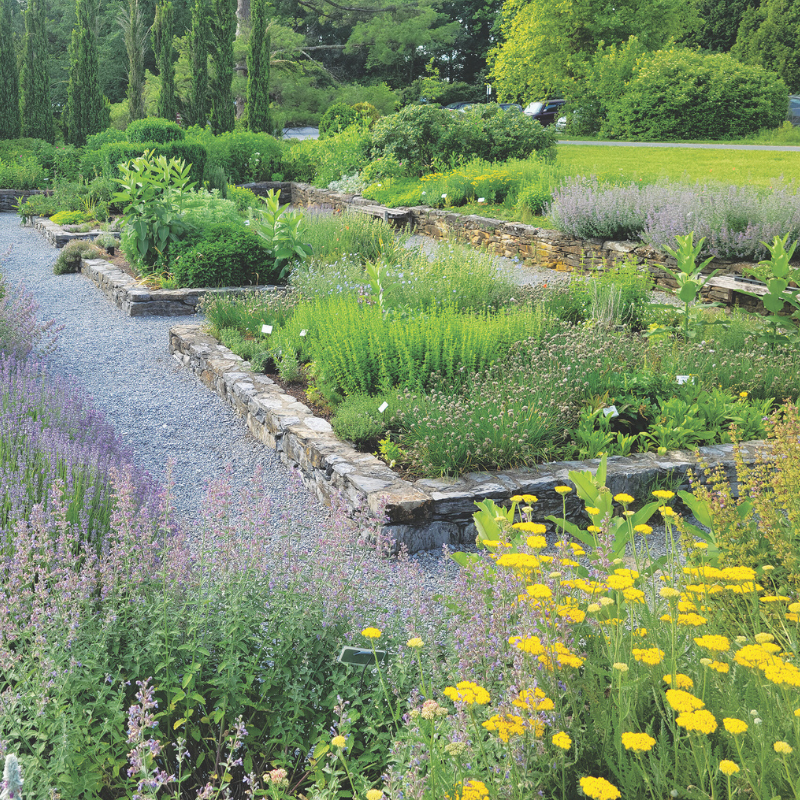- Visit
- Things to Do
- Learn
- Arboretum
- Research
- Support
- About
- People


The herb garden was established by volunteers in 1972 to showcase plants with culinary, medicinal, and household uses. The herb garden is one of the oldest gardens at the Arboretum and has undergone many changes and renovations.
The following photographs were taken in 1989.


Today the garden features over one hundred herbs with culinary, medicinal, and household uses.


Most herbs are generally easy to grow, preferring full sun and well-drained soil. Some herbs will grow in shadier areas including chives, dill, cilantro, parsley, mints, and tarragon. Not all herbs are perennials, some are annual and are planted each year. Tender perennials like rosemary, may require protection in harsh winters. Herbs do well in both gardens and containers.


Perennial oregano Annual basil
For thousands of years, people around the world have used herbs to treat and cure disease as well as to flavor food. Many common herbs such as thyme, oregano, and sage have both culinary and medicinal uses.
Early herb gardens date to Europe in the Middle Ages when compendiums and texts described how to prepare and administer herbs were first published. Herbs and spices were traded across the globe, often in exchange for gold and silver, and many of them made their way into our foods and gardens.
Other uses for these plants include frangrance, textiles, cosmetics, and household products.